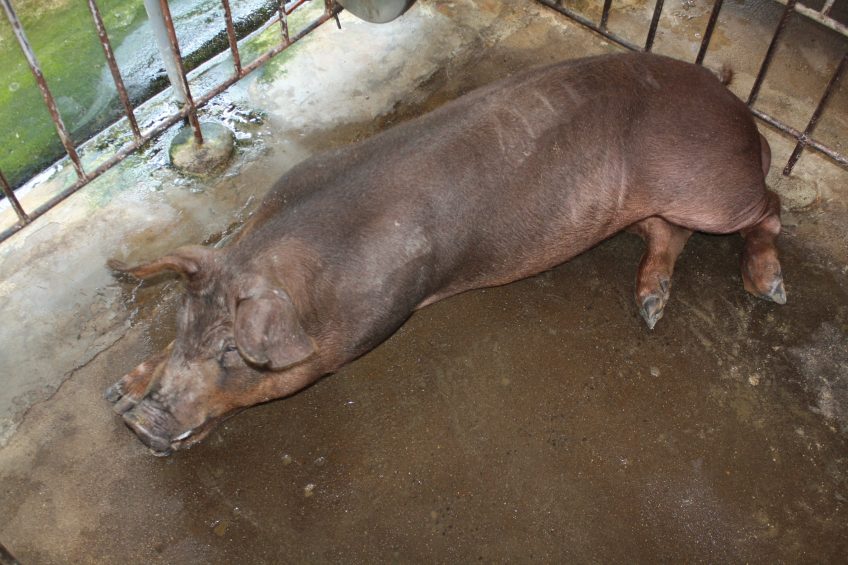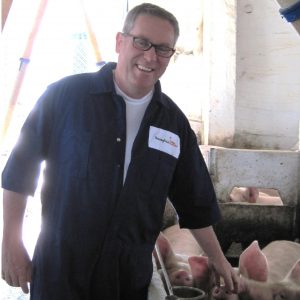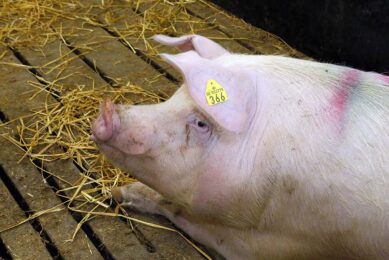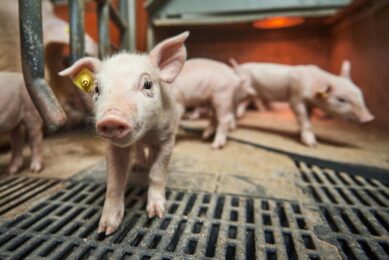Heat stress series: A vet’s view on heat stress in breeding

In the next few months, the topic of ‘heat stress’ will be discussed from different angles. Every discipline has their own manual and own advices to give. This episode zooms in on a veterinary approach: what causes heat stress and what can a vet do to avoid the problem?
Modern pig breeds were derived from founder populations in the temperate climates of China and Europe, so they do not adapt to hot and humid weather quickly or easily. A number of problems can occur when breeding pigs are placed into heat stress situations across the pig-raising regions of the world.
Acute heat stress
Occasionally, pigs housed in enclosed buildings can suffer from a severe and acute heat stress problem, known as hyperthermia. Whether it is caused by a fault or a machine-related stoppage, a problem with the ventilation systems can result in the mechanical heating or cooling systems to cease functioning. This will lead to the consequent loss of cooling ventilation in the affected building.
In turn, that will lead to the rapid build-up of heat inside the building, due to the presence of many larger pigs, and will quickly result in a hyperthermia situation and the many pig deaths in the enclosed buildings. In a typical case study, the affected room is very hot, and the sick pigs are hot, dirty and smelly. The death rate can be very high, with the only surviving pigs being the smallest ones in the group. Checking the main electrical and ventilation systems, will establish the fault. Therefore, serious attention must be paid to the installation of the correct lightning rod and electrical systems for enclosed buildings, with adequate warning alarm systems.
Chronic heat stress
On most pig farms, however, heat stress appears in much more subtle forms and this is what this article shall focus on. Pigs do not have many innate systems to control their body temperatures, as they do not sweat (except from their snouts). Many pig farms therefore develop procedures to keep pigs cool in summer.
For instance, sheds should have adequate insulation and ventilation systems. In addition, in hot conditions, pigs should be supplied with cooling ventilation or water-cooling systems. Water cooling systems, such as drip lines, mist spray devices or shallow pools in pens can allow the pig to lose heat via the cooling effect of water evaporation on the skin.
However, in some tropical climates with high humidity, the water will not evaporate and the pigs will not be cooled. The growth performance of pigs in open buildings in tropical climates is therefore unlikely to match those in temperate climates.
Where the weather is hot and humid, as well as conditions where the cooling and water delivery systems are not adequate for the location and climate, then heat stress problems are a common problem on pig farms. For breeding pigs, this usually builds up over a period of time into 2 related problems with breeding performance and fertility.
The chronic heat stress problems in breeding pigs are generally known as summer infertility and seasonal infertility, with slightly different causes. However, these 2 problems can run continually on the same farm. Both of these problems tend to occur over several batches of pigs, often over many years, with the poor farm performance detected by examination of breeding data.
Summer infertility in sows
Summer infertility is, due to various heat stress factors, associated with hot temperatures inside sheds or outdoors.
It is often suggested that with summer infertility, sows fail to cycle due to the hot months. What generally happens is that relatively many sows, despite having been mated with good quality artificial insemination semen, in these months will return to oestrus later. In addition, sows that indeed did become pregnant, will have abortions in later pregnancy. Overall, during October and November, farrowing rates of a herd affected by summer infertility can be 10 to 20% lower than expected.
In practice, the effects of hot weather on breeder female pigs are threefold:
- It leads to a reduced appetite among the gilts and sows, which will negatively impact on the onset of the subsequent oestrus, ovulation rates and conception.
- Hot temperatures will also reduce sow mating activity.
- The higher temperatures can also lead to the loss of some pregnancies, due to heat stress and the need for maintenance of suitable core body temperatures.
In a typical case study of summer infertility, farmers operate an established breeder and production farm system, in a climate area with hot summers. In case these farmers are in the northern hemisphere, farmers will start noticing that they have problems to supply sufficient amounts of production pigs for marketing to processors in March and April. This failure of pig supply can be traced back to a lack of piglets being born in October and November.

Seasonal infertility with semen problems
This type of seasonal heat stress infertility is associated with semen problems, which may lead to low conception rates. In summer months, boars are less active, resulting in less effective mating, particularly if the mating pens are over-crowded. Any time the temperature is over 27°C and humidity higher than 50%, the volume and quality of semen will be affected. Boars must be housed in a way to keep them as cool as possible. The effect of heat on boar semen quality can last 6 to 7 weeks until the animal is fully recovered. There may also be a deterioration of boar semen in transit in hot weather, from a stud farm area to a breeder farm, especially if old transport vehicles are used.
In a typical case study of this type of seasonal infertility, farmers operate an older and established breeder farm, housing different groups of females and boars, with a combination of artificial insemination (AI) and natural mating techniques. The AI semen may come from a distant boar stud and the semen deliveries for the farm may arrive in old trucks.
The natural matings occur in busy mating pens in one of the older buildings. Over the summer months, the farm pregnancy testing indicated that the conception rate was low, at only 80%, with the resulting farrowing rate also low, at 75%.
Close inspection of the breeding records usually indicates that many of the non-pregnant gilts and sows are not ‘holding’ their matings, with these gilts and sows showing a normal oestrus 21 days after the previous oestrus and mating. These are classified as regular returns to service and not pregnant. The problem is usually worse in crowded gilt pens.
Control of heat stress problems
Both types of heat stress and summer and seasonal infertility are common and serious problems, with no simple solutions to the reduced farrowing rates.
- The breeder farm must look to improve the condition and stress levels of the gilts up to mating. The management of pens and mating protocols must enable the pigs to feel comfortable. The use of stalls to house gilts can improve their conception rates.
- The AI service must be checked to make sure that semen quality is kept active from the stud to the farm. Boar semen must be carefully transported in appropriate maintenance fluid (extension fluids) at the appropriate temperature. Semen used for AI must be kept at 17°C during transportation and usage. Any variation in temperature up or down will affect the quality and longevity of the semen and affect conception rates.
- Gilts themselves are growing animals and not having ready access to feed and water will impact their future productivity in the herd. Breeding pigs also require the addition of appropriate levels of zinc as a feed additive important in terms of foot and hoof health and growth.
- Many pig farms also develop better procedures to cool their pigs in summer. Sheds should have adequate insulation and ventilation systems. Water sprays can be applied to the pigs, the floors or the outside roof, for evaporative cooling effects. Female pigs should always be given free access to cold drinking water. Other management factors to keeping pigs comfortable in open housed accommodation include adequate insulation linings, high volumes of water flow in drinkers, and low stocking rates.
- Another management response in many farms is often to just increase the total number of pigs mated through the summer and autumn, leading to the target number of farrowings and production pigs. So the farm may reduce the culling of older sows and increase the number of gilts and their matings through this summer period.
Chronic heat stress: a recap
Chronic heat stress is a common pig farm problem across the pig raising regions of the world. Reducing the effects of chronic heat stress requires adequate detailed records to establish the farrowing rates, numbers of pigs born alive and related breeding farm data. Interventions to reduce heat stress and improve farm performance are generally managemental choices needed to mitigate the known effects of hot and humid weather on breeding pigs.
This article is a first in a heat stress series, which has been made in cooperation with Animine.
Join 18,000+ subscribers
Subscribe to our newsletter to stay updated about all the need-to-know content in the pigsector, three times a week. Beheer
Beheer









 WP Admin
WP Admin  Bewerk bericht
Bewerk bericht